 |
 |
 |

January / February 2007

Transforming Practice with Mobile Clinical Tools
How UCLA Medical Center Specialists Developed and Launched an Innovative Clinical Computing Solution
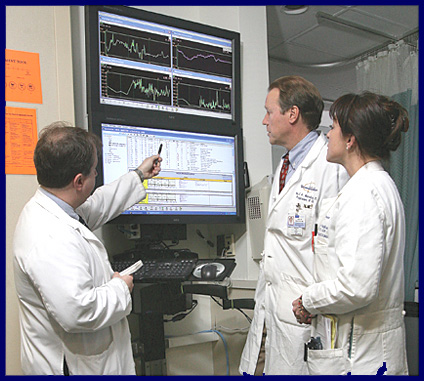

Meanwhile, another dramatic success has taken place in the area of emergency stroke management. David Liebeskind, M.D., the neurologist who runs UCLA Medical Center's stroke management programs, says the ability to instantly access key clinical data — and images — from anywhere, is absolutely critical to successful stroke management. "Time to treatment is critical in this area, probably more so than in any other area, including heart attack, " said Dr. Liebeskind. "And it's not just time itself that's important, but getting as much information as possible in a short time, is crucial in stroke treatment. Often, you get very little information, such as, 'weakness on the right side.'"
In fact, ICIS has been incorporated into a very important clinical initiative at UCLA Medical Center, the first pre-hospital stroke study in the United States, according to Dr. Liebeskind. "We get called on our pagers by paramedics in the field" responding to situations involving apparent stroke onset. "At present, the communication takes place on the telephone, but soon we are going to be implementing video links," he said.
A key element in this tele-stroke program is the ability of Dr. Liebeskind and his colleagues to instantly access vital data on the patients' status. For example, getting a diagnostic image on a screen (whether desktop or PDA) to the attending physician handling the emergent case. Gathering past diagnostic images and patient information, and being able to immediately view an MRI brain scan, for example, are critical to the optimal treatment of a patient with apparent emergent stroke symptoms.
Rapid Response Through
Mobile Technology
Using the ICIS solution, Dr. Liebeskind and his neurologist colleagues are able to instantly and accurately view diagnostic images anywhere, expanding their clinical capability considerably. Dr. Liebeskind noted that he has successfully consulted on emergency cases while on a ski lift in Taos, New Mexico, hundreds of miles away from UCLA Medical Center. Intervening through case management in a tele-stroke program, he said, "means providing critical information in a crucial timeframe — and sometimes that timeframe lasts no more than a few minutes. Case management is often very quick as a process — sometimes it involves ruling in or ruling out certain factors, very quickly — but if you don't have critical information available at the crucial moment, including imaging, your role as a stroke neurologist is defeated."

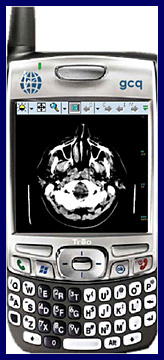 |
|
Brain CT seen in ICIS Mobile's PACS Viewer
Photo courtesy of Global Care Quest |
And while it's primarily diagnostic images that neurologists like Dr. Liebeskind are looking for in stroke management, nephrologists like H. Albin Gritsch, M.D., find the trending capabilities of the ICIS solution package the most useful.
Dr. Gritsch leads the renal transplantation unit at UCLA Medical Center and noted that the solution "integrates a lot of different systems into one platform, so you don't have to keep going from one server to the next. The other feature I like a lot is the graphing capability; that capability very quickly allows you to graph lab results and therefore get a trend, which is very important for kidney transplantation." This is especially true, he said, in trending creatinine levels, a measure of kidney function. Having to move from one computer workstation to another, as he and his colleagues did in the past, was very inconvenient and challenging. Now, Dr. Gritsch said, he's able to quickly access trend-worthy patient data on his PC or PDA, when he is at home or a satellite clinic, and able to communicate vital information to other clinicians.
Physician Adoption by
Word-of-Mouth Marketing
Not surprisingly, as physicians in neurosurgery, neurology, nephrology, the ICU, and other departments at UCLA Medical Center have learned of the benefits of ICIS, more and more have become active users, even with no mandate from hospital management. Indeed, of the 4,600 members of the medical staff at UCLA, nearly 1,500 have registered to use the GCQ system's tools to date. At the same time, the innovation that has taken place at UCLA Medical Center is spreading, as several other hospital organizations in Southern California have begun implementing the GCQ commercial solution to suit their diverse clinical computing needs.
The diversity of uses to which this toolbox of solutions could be applied doesn't surprise Dr. Martin. "Initially we just wanted to provide mobile access to the EMR and enhance clinical decision-making and workflow for neurosurgeons and other specialists," he said. What became apparent very quickly was the need to identify what types of clinical data were mission-critical for physicians, and how to integrate disparate data fields on a single screen and to optimize speed, connectivity, and mobility. The work that began at UCLA, he believes, will be important for all types of hospital organizations, including teaching hospitals, community hospitals, pediatric hospitals, and other types of institutions. Dr. Martin reports, "When I meet people from community hospitals, they cite the same kinds of challenges we've faced here."
Integration, availability, mobility, and shareability of clinical data and information are all themes that make UCLA Medical Center's IT saga universal for all hospitals as clinical computing continues to evolve. As software solutions like ICIS become more available on the healthcare IT market, more physicians like UCLA Medical Center's specialists will innovate their care management in the next decade — to the benefit of patients nationwide.
Mitch Work has more than 25 years of experience in healthcare as a researcher, educator, and executive for provider and supplier organizations. Currently, he serves as president of The Work Group, Inc, a healthcare consulting company delivering strategic marketing, sales, and public relations services to healthcare IT companies and provider organizations. Over the past 18 years, Work has been involved in healthcare IT consulting, assisting HIT companies and providers to be more successful. Recently, he has focused on new technologies for patient safety including barcoding, RFID, wireless technology, and the Internet. He also assists companies to launch new HIT products and establish vertical healthcare technology businesses. He has conducted ROI and best practices studies to demonstrate financial and clinical benefits from HIT. Over the past year he has consulted with several national and international healthcare technology conferences and has served as a co-chairman, presenter, and panel moderator. Work is a member of the Editorial Advisory Board for Patient Safety and Quality Healthcare and may be contacted at mitchwork@comcast.net.
|
 |
 |
 |
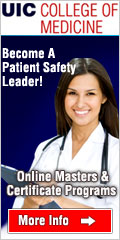

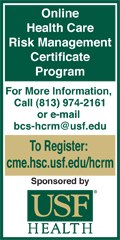

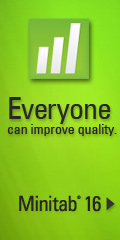



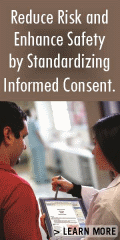

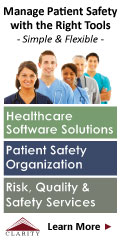

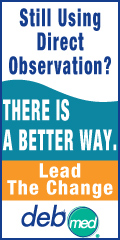





|
 |



